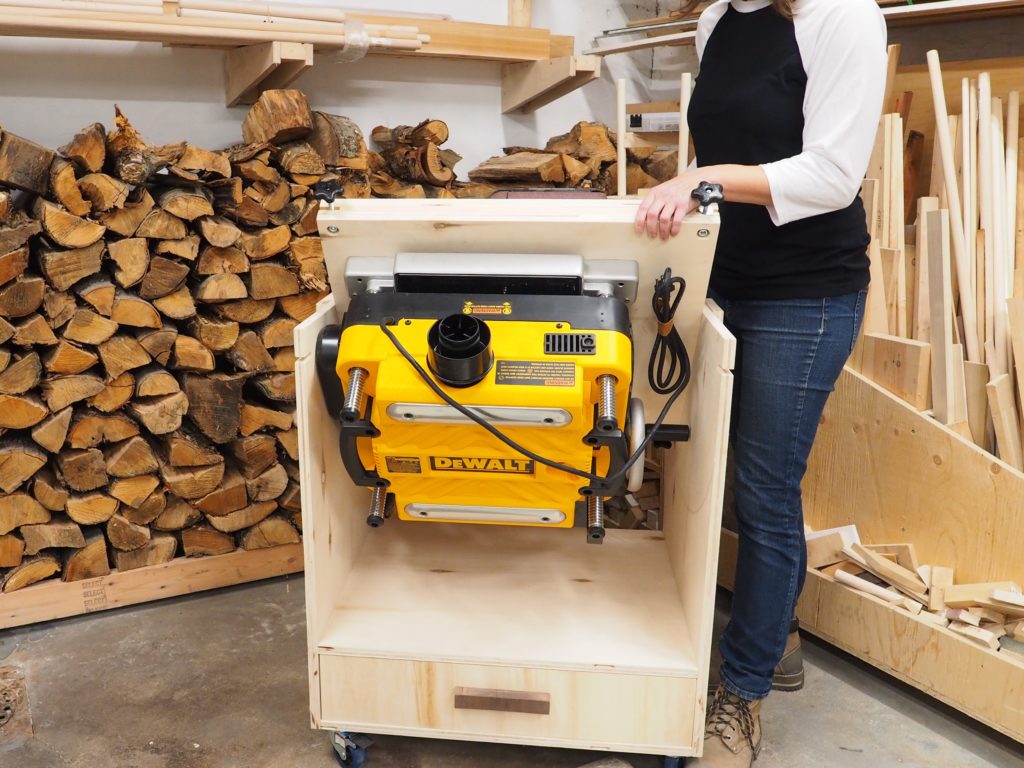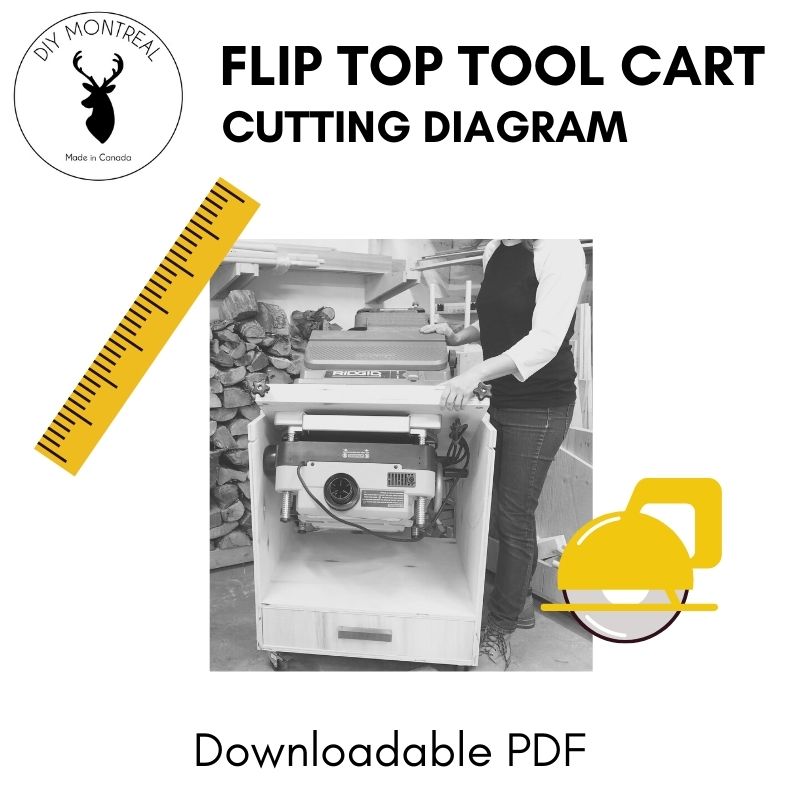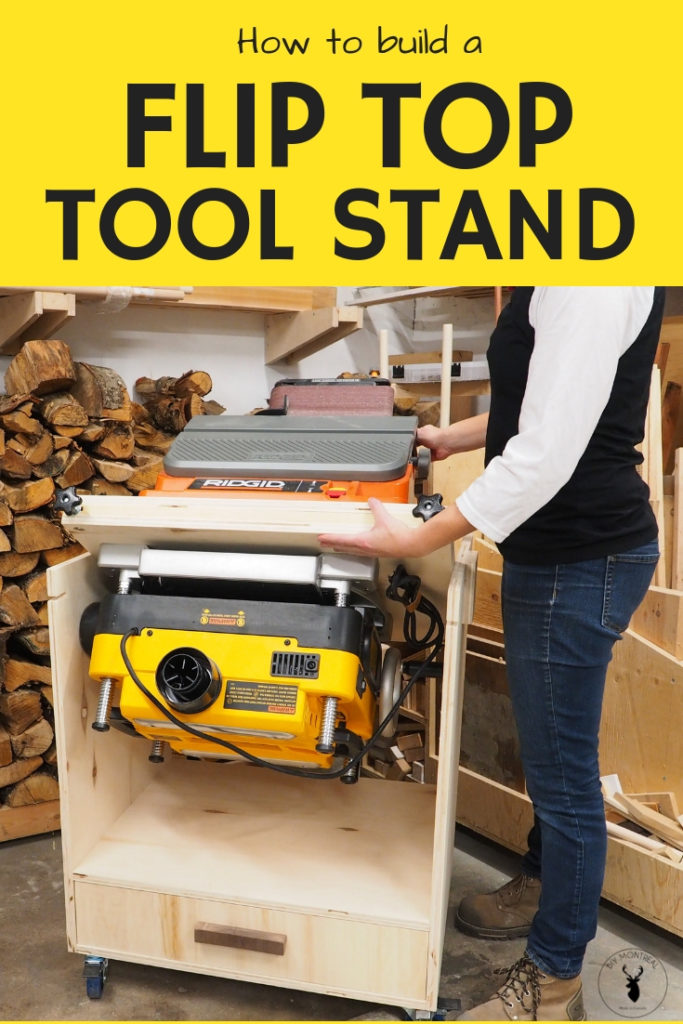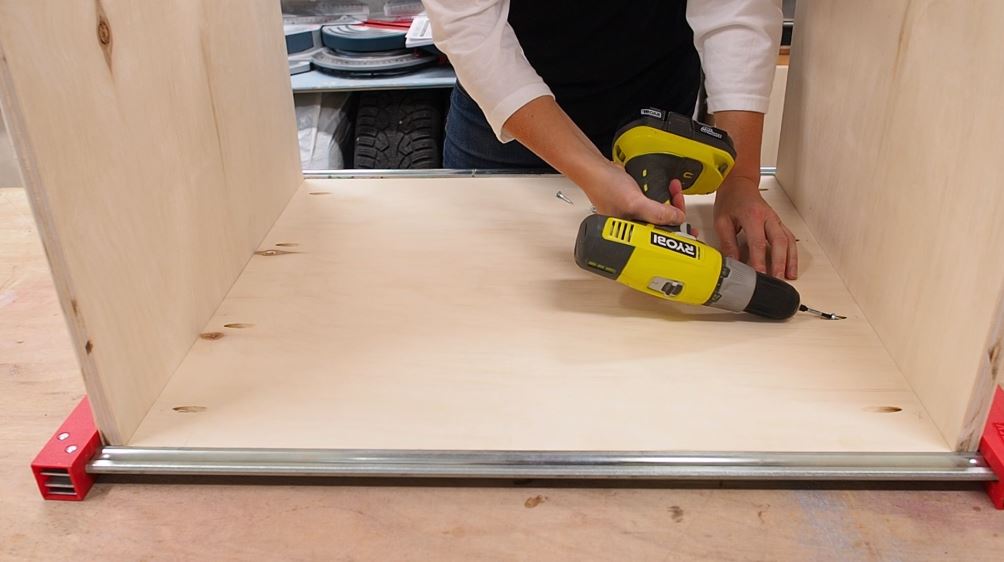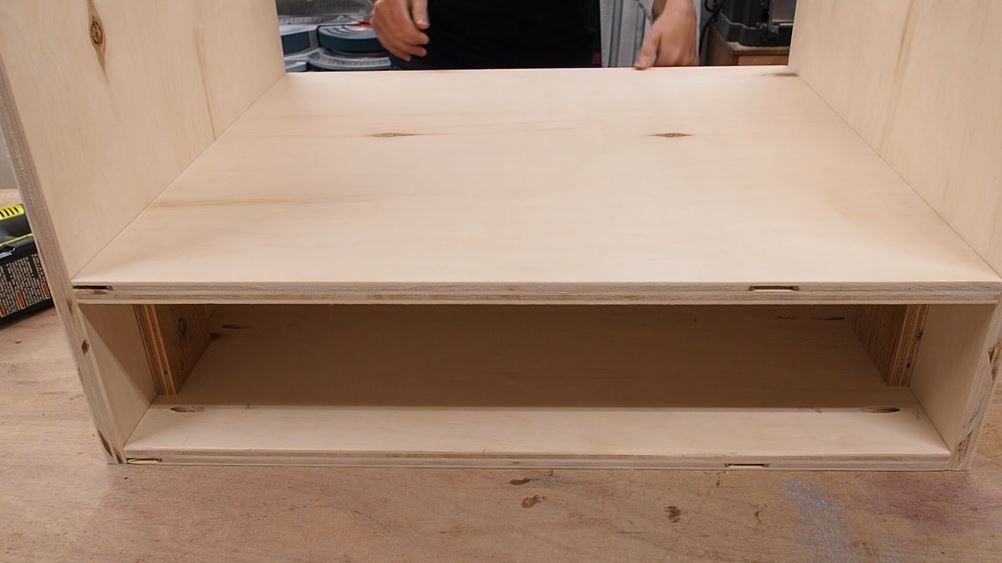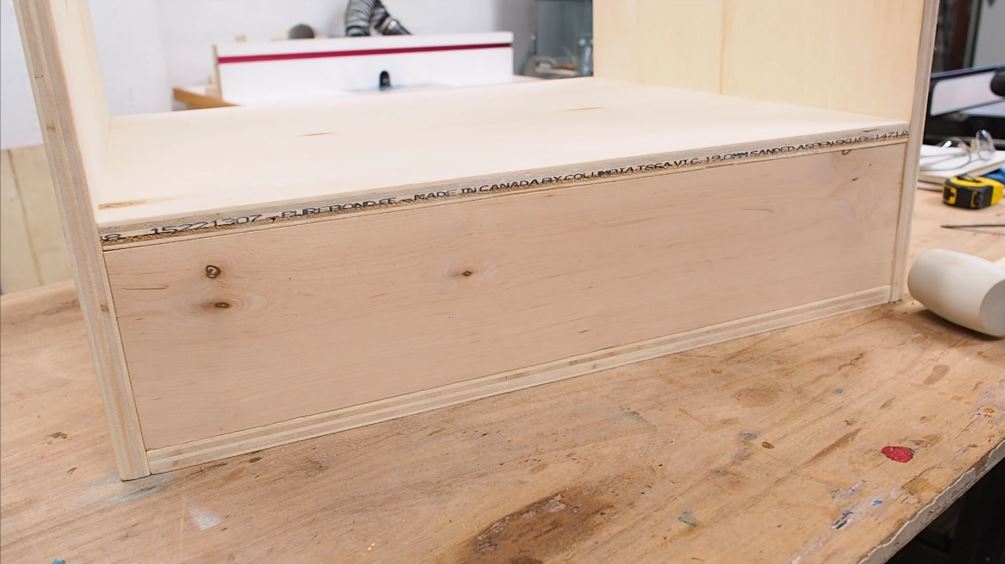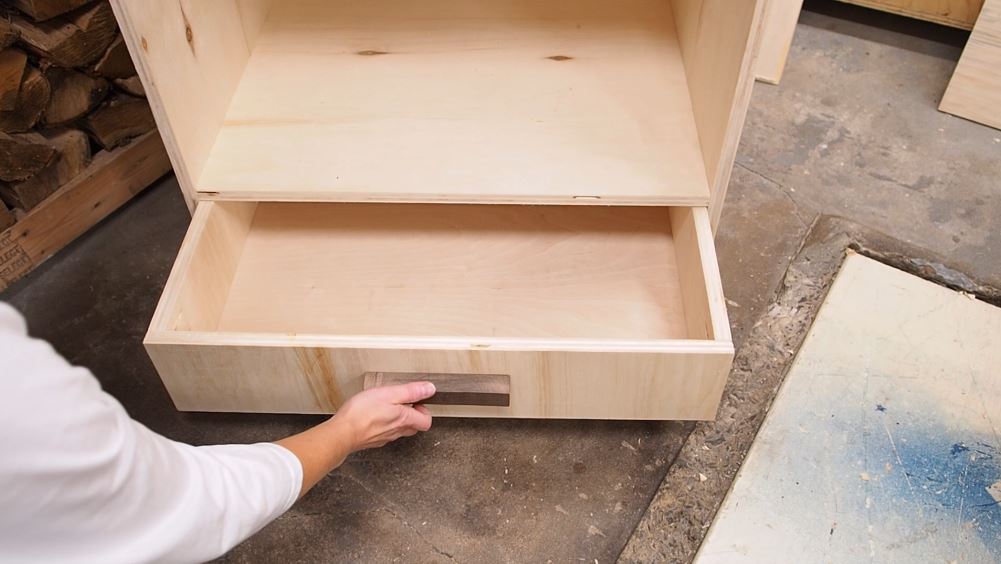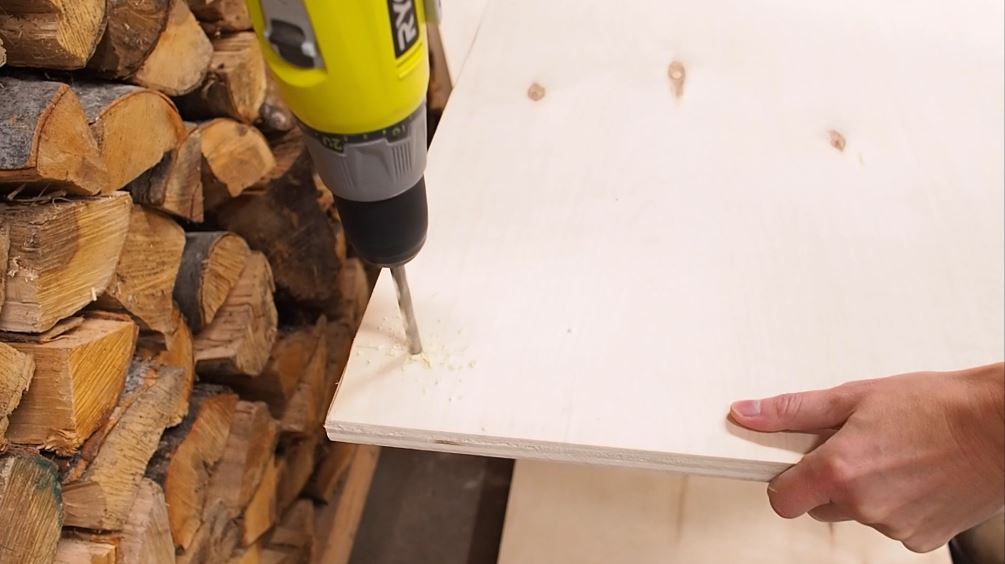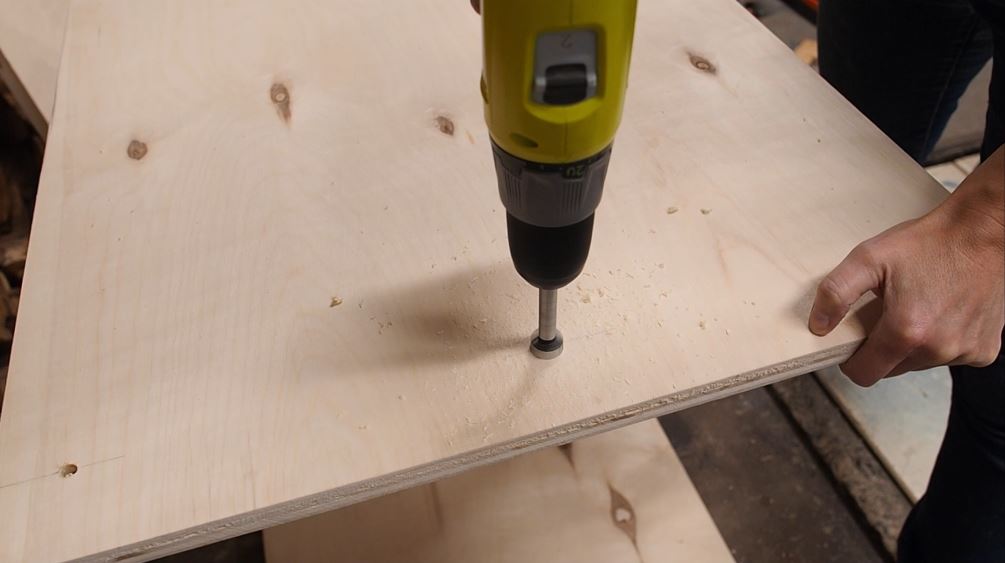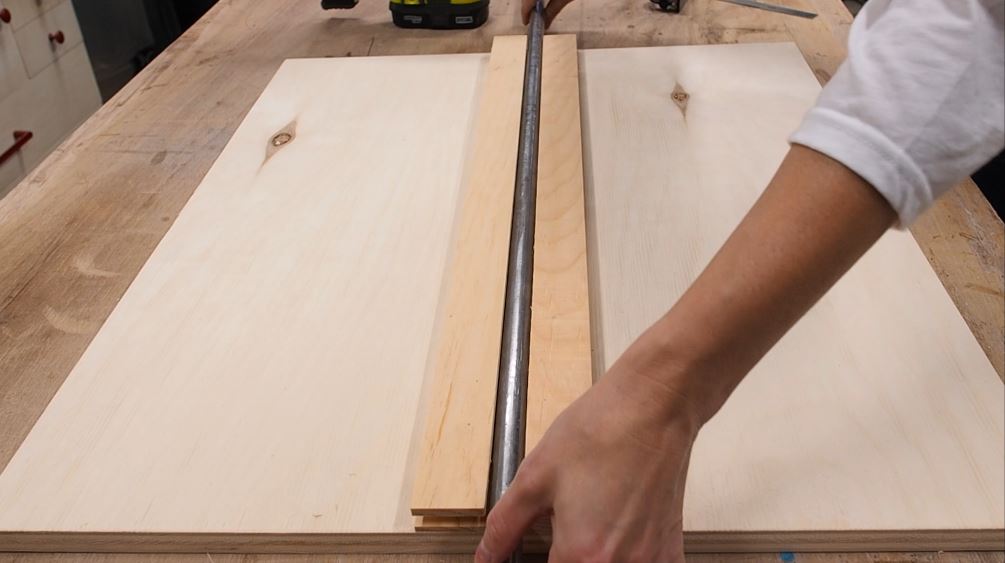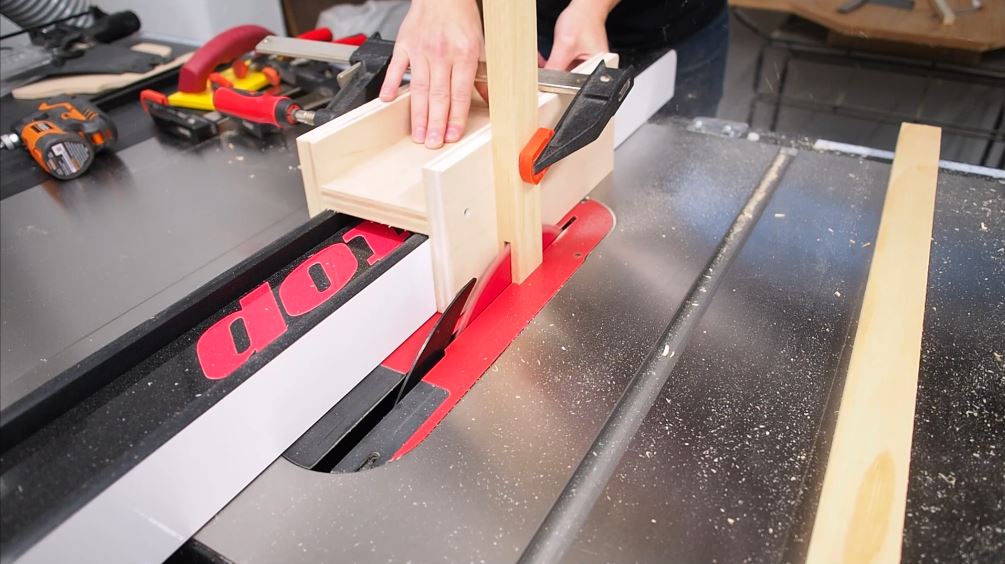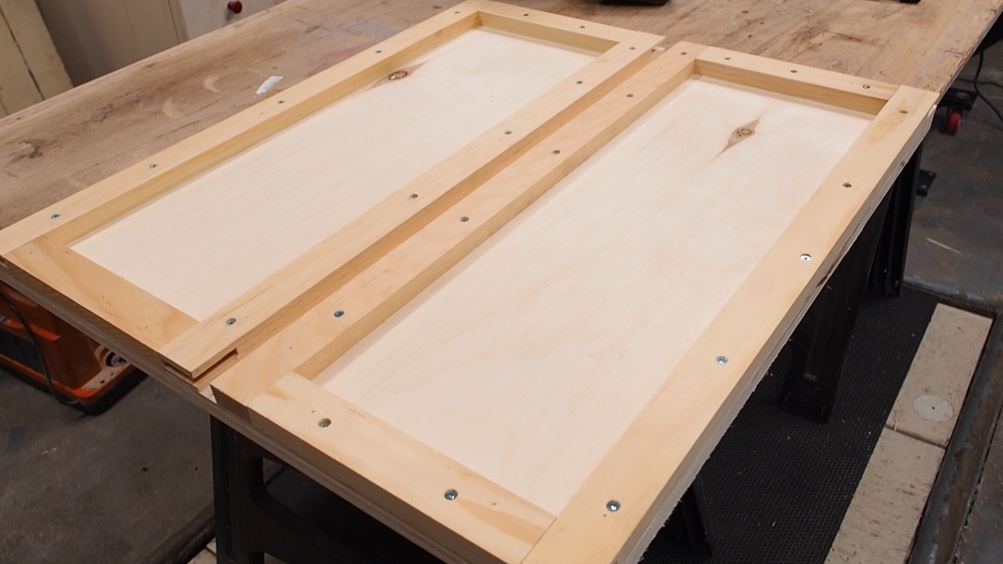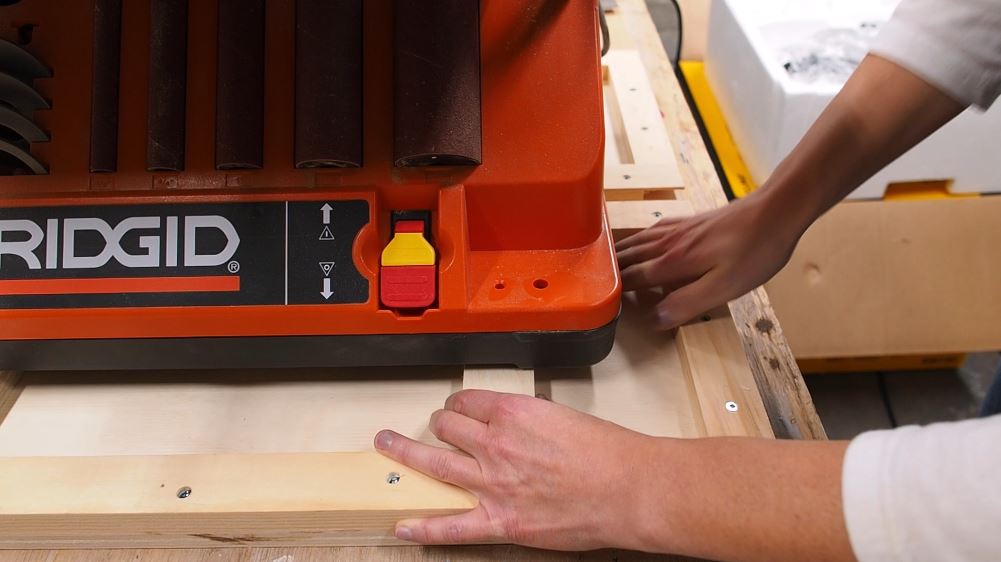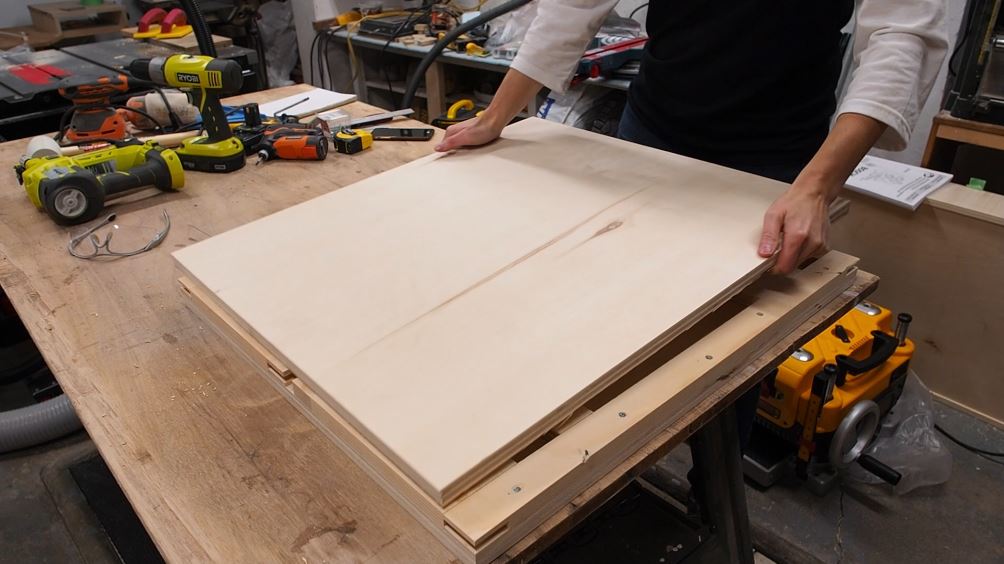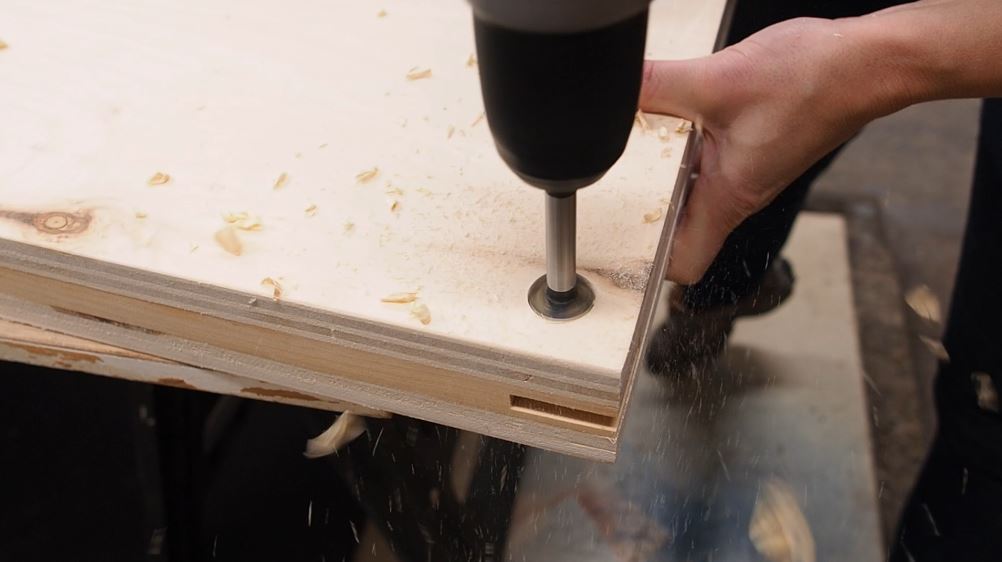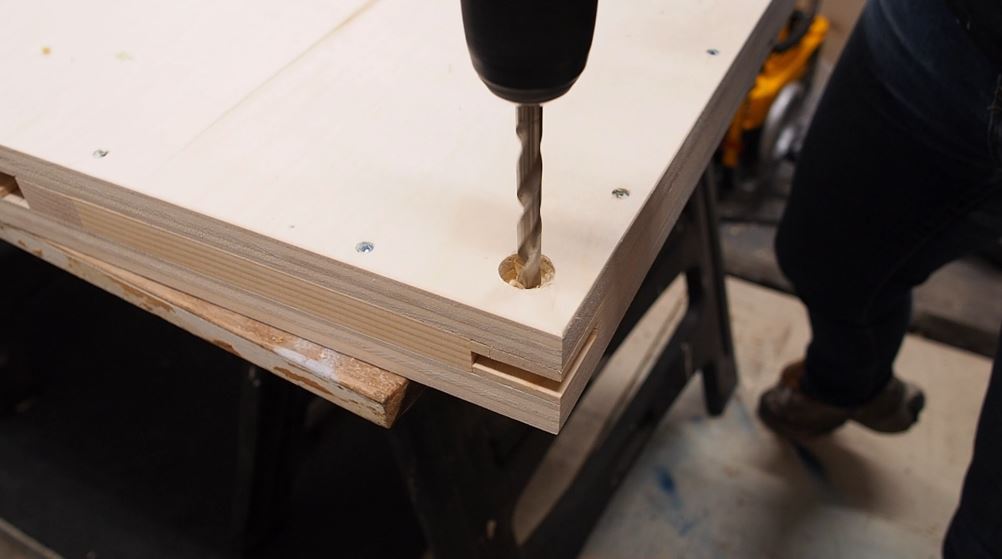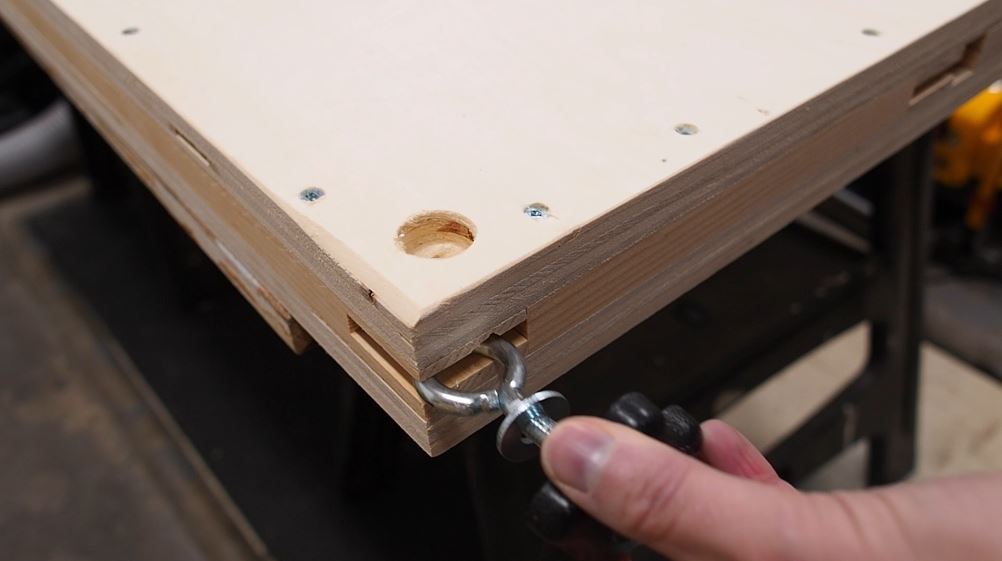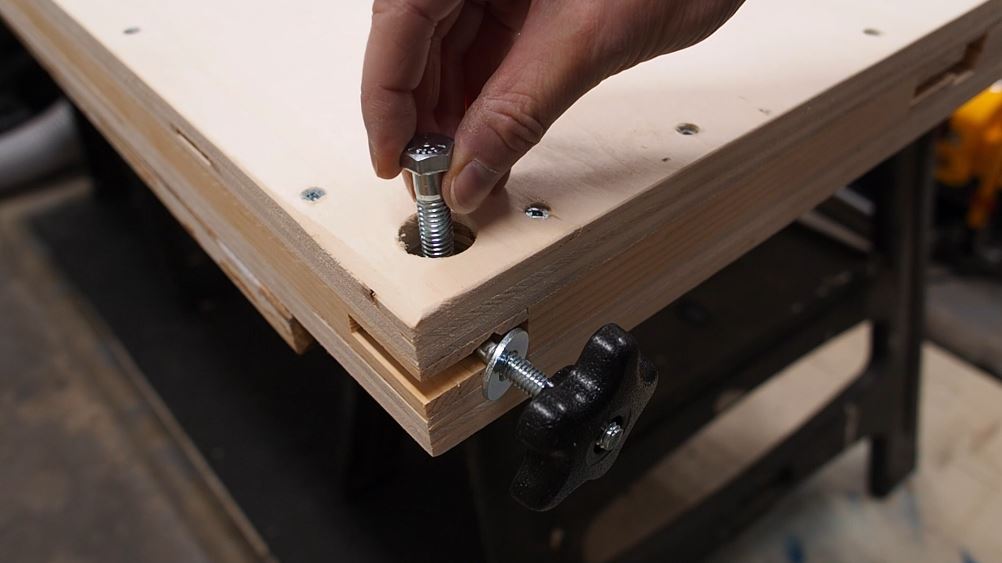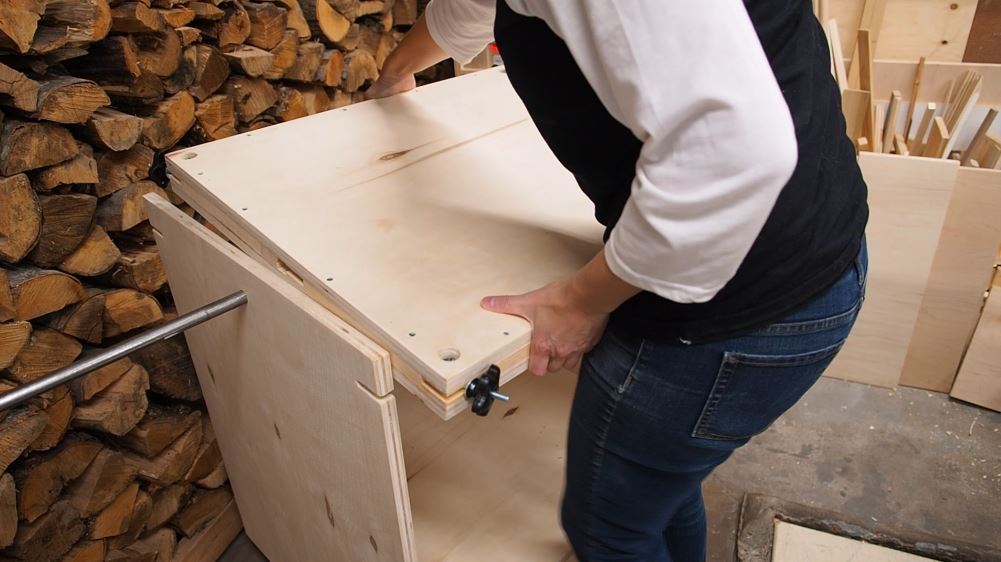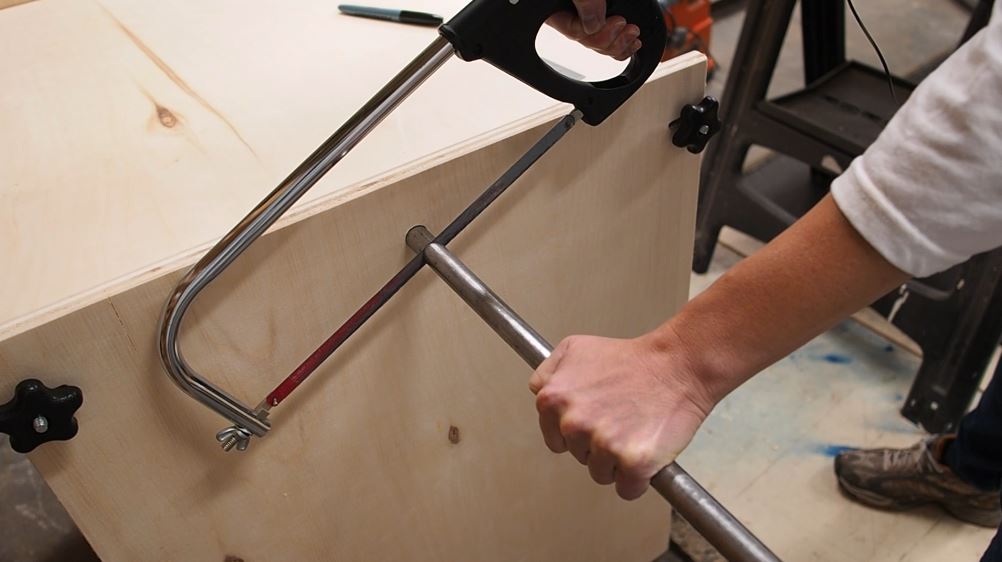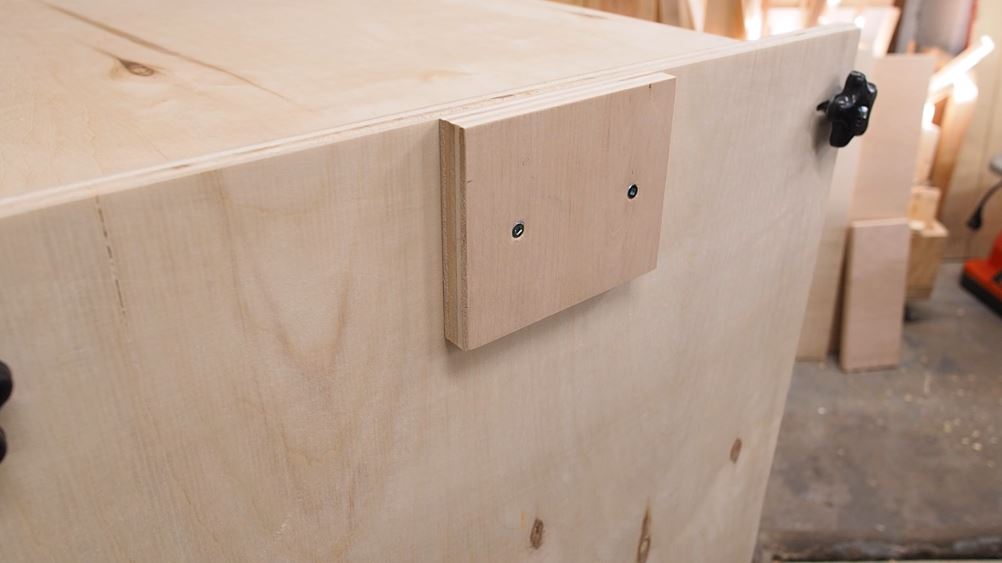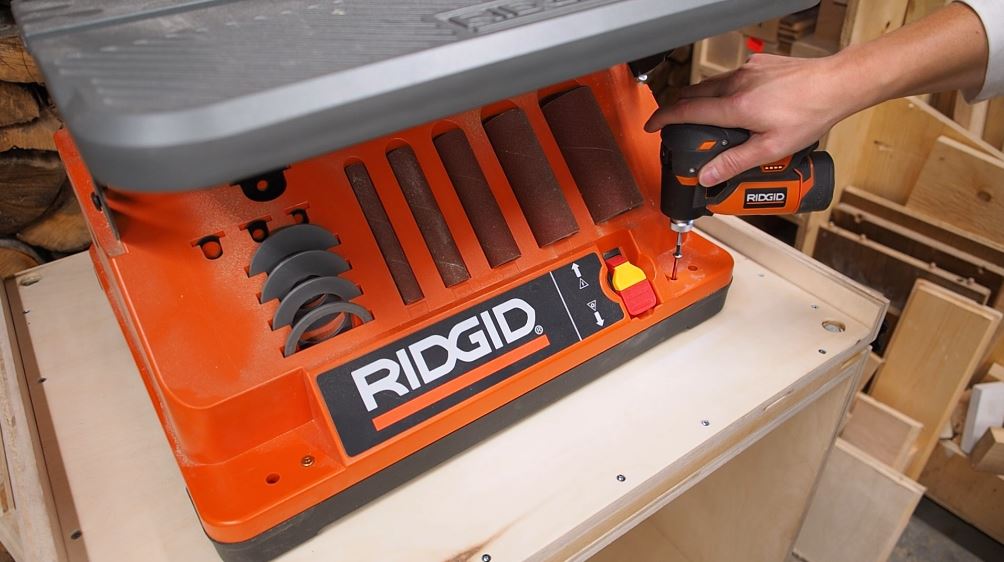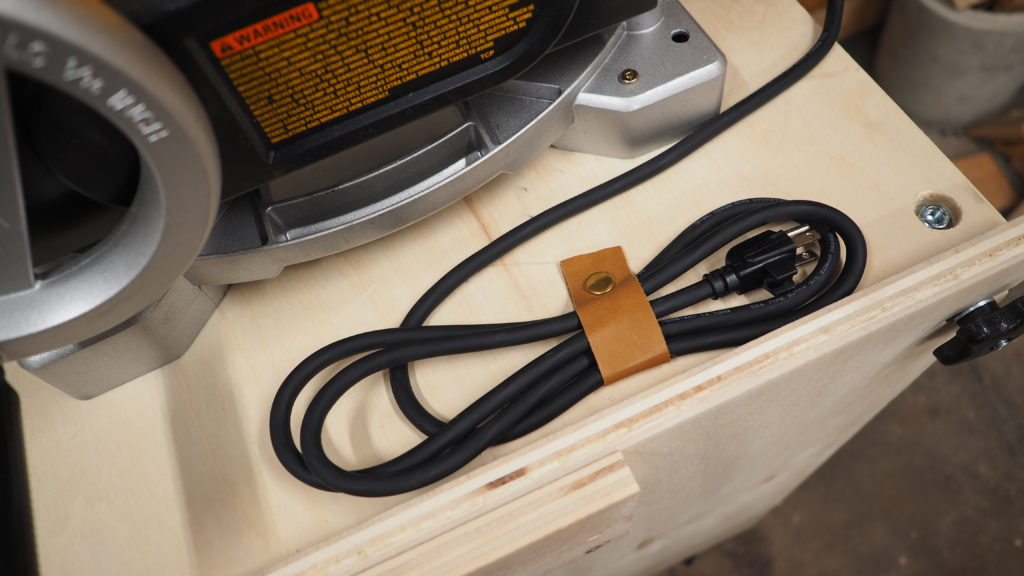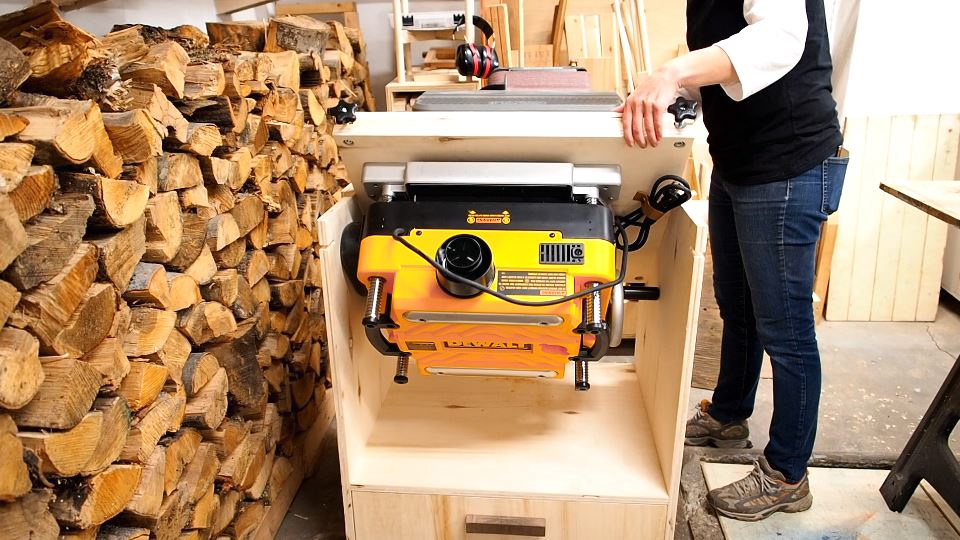If you’re like me, you have limited space for tools in your workshop, aka garage. What can I say, I love tools, but my single car garage has gotten so cramped, I can barely move around, let alone find room to build something. I desperately need to do something to save some space and optimize the layout.
A simple solution I came across is a flip top tool stand, that allows you to store 2 tools in the space of 1, all while making them easily accessible and ease to use when you need them.
You can use a flip top cart for a wide variety of tools, but I’m going with my Dewalt planer and my Ridgid spindle sander. My planer will live on the top side since I use it most often, while my rarely used bench sander will live upside down, at least most of the time.
Hardware
Here’s the hardware you’ll need to build this flip top tool stand:
- (4) 5/16 x 3-½” eyebolts
- (4) 5/16 fender washers
- (4) 5/16 star knobs
- (4) 3/8 x 1-½” hex bolts
- (8) 3/8 washers
- (4) 3/8 nuts
- (1) ¾ O.D. steel pipe 36″ long
- (4) 3″ locking casters
- (16) #14 x ¾” wood screws
- (8) #8 x 3-½” wood screws
- 1-1/4″ pocket hole screws
- 1-1/4″ wood screws
Build a flip top tool stand for your planer and sander
Assemble Cabinet
Start by cutting some 3/4 inch plywood into panels. You’ll need 2 equally sized pieces for the sides and 4 equally sized pieces for all the horizontal parts (bottom, shelf, platform). Drill pocket holes into the side edges of the bottom and shelf pieces. Attach the bottom to both side panels using pocket screws.
I cut some 5 inch spacer blocks to prop the middle divider into place then used pocket screws to attach it to the side panels from underneath.
Lastly, I tapped in the back panel and screwed it in from inside using more pocket screws. This piece will actually add stability and prevent side to side racking.
Make drawer
I wanted to make a really simple drawer, without any slides or even a drawer face, so I just cut 4 pieces of plywood to make a box 1/8″ smaller than the drawer opening. I used my table saw to cut a shallow 1/4″ wide groove in all 4 pieces in order to accommodate the drawer bottom. Then, using pocket screws, I assembled 3 sides, then slid in the drawer bottom and then attach the 4th side with some more pocket screws.
Prep Sides for Hardware
I flipped the cabinet over on its side and marked a line 2 inches down from the top edge.
I used a 5/16 bit to drill a hole on each side of the panel, 1-½ inches in from the edge.
Next I extended the sides of the hole to the edges of the plywood and used my jigsaw to cut away a notch. Using your speed square as a guide really helps here.
I then used a 3/4 inch Forstner bit to drill a hole in the center that will hold the pipe.
I repeated the same same steps as above on the opposite panel as well.
Build Platform
I started by finding the center line from front to back, then marked a line at 3/8″ on each side. This will be the nook for the steel pipe.
I laid a piece of 1×2 pine up against the lines on each side and tacked them into place with my brad nailer, then screwed them down using 1-¼ wood screws.
I need to create a notch in the outer 1×2 pieces, so I made a simple jig that will ride along my table saw’s fence to make a 5/16 notch in the center of the boards, that’s 1-½ inch deep.
I cut up some more pieces to complete the perimeter, making sure to line them up flush before screwing them down.
Before sealing up the platform, it’s important to add blocking underneath the tools I’ll be mounting so I’ll have something to screw into. You want to make sure to line up the blocks under the smaller holes if you’re using screws, the bigger holes are if you’re using bolts.
With all my blocking screwed down, I sealed the platform with another piece of plywood, securing it with screws all around.
Assemble Hardware
Start by marking each corner 1 inch from both edges using a combination square. I then used a 7/8 Forstner bit (or whatever the size of your washer is) to countersink a hole, roughly ½ inch deep, on both the top and bottom side of the platform, in all 4 corners.
I then used a 3/8 drill bit to drill a hole in the center of the recesses, all the way through.
I slipped the eyebolt into the slot, then inserted a 3/8 bolt through the hole, first adding a washer on each side of the platform, and secured it with a 3/8 nut. It’ a good idea to use some locktite to make sure the nut won’t loosen over time.
To finish off, slip a 5/16 fender washer onto the end of the eyebolt, and screw on a 5/16 star knob.
Mount Platform
Okay, so getting the platform onto the pipe is not the easiest if you’re doing this by yourself. Eventually the pipe found the center compartment in the platform and I was able to thread it through.
You’ll want to leave about half an inch of pipe sticking out on each side, so I marked the pipe and used a hacksaw to cut the pipe to length.
To lock the pipe in place, I used a ¾ inch Forstner bit to make a half inch recess into a couple blocks, then mounted one on each side with some screws.
Secure Tools
With the platform locked in place, I propped my sander up on the platform and screwed it down to the platform (using the smaller screw holes – the larger holes are for bolts) using 3-½ wood screws. Edit: I later went back and replaced the wood screws with lag screws.
I then flipped the top and screwed down my Dewalt thickness planer.
For cord management, I used some left over leather I had and added a pressure snap. This will be a quick and easy way to keep the cord secured and out of the way.
Now, let me tell you, the first time I flipped the tools over I was pretty nervous! The planer alone weighs about 90 lbs! But all my fears melted away when I saw how smoothly the platform rotated and a new tool magically bobbed into place.

